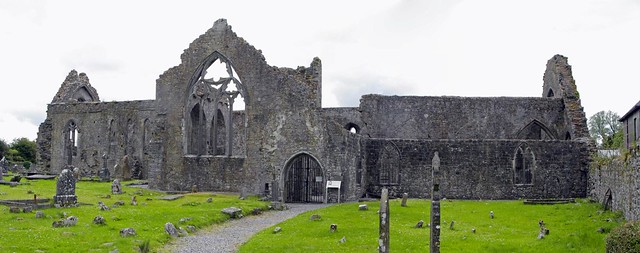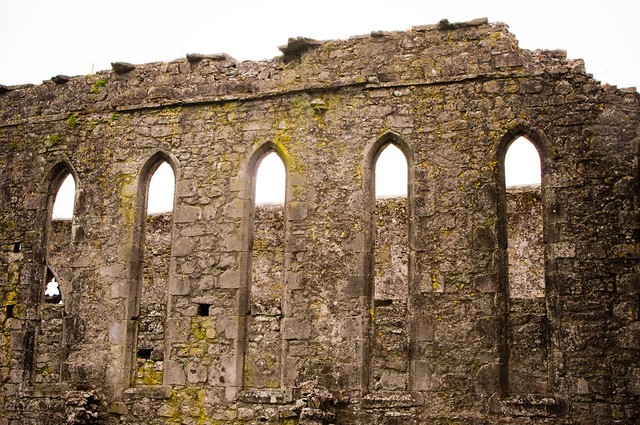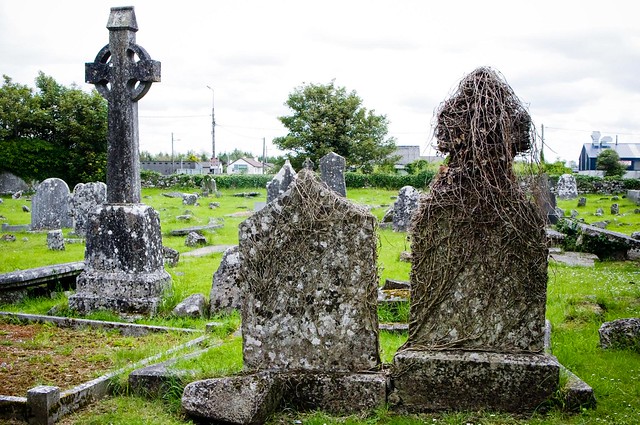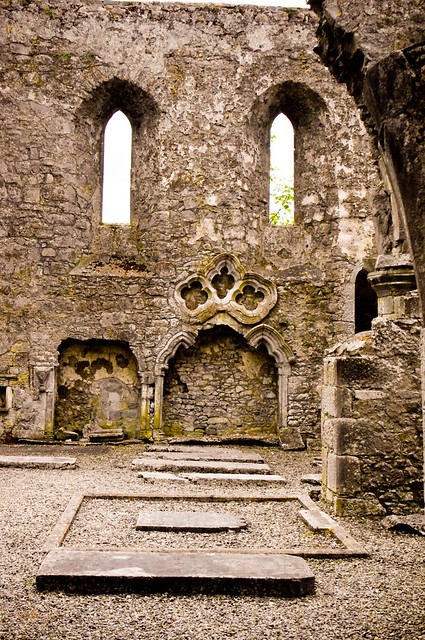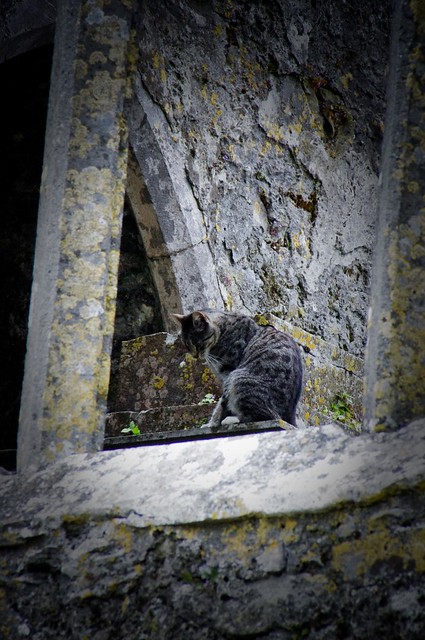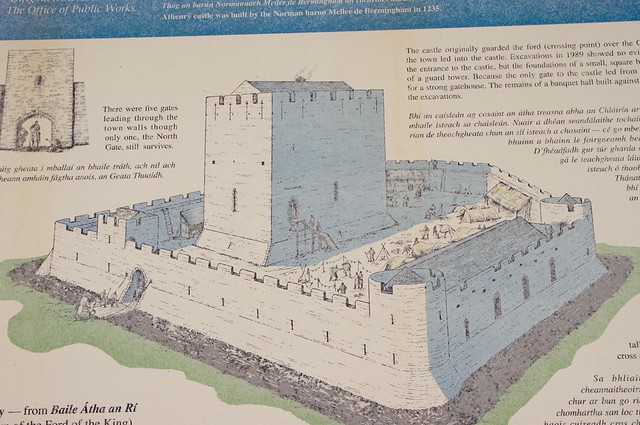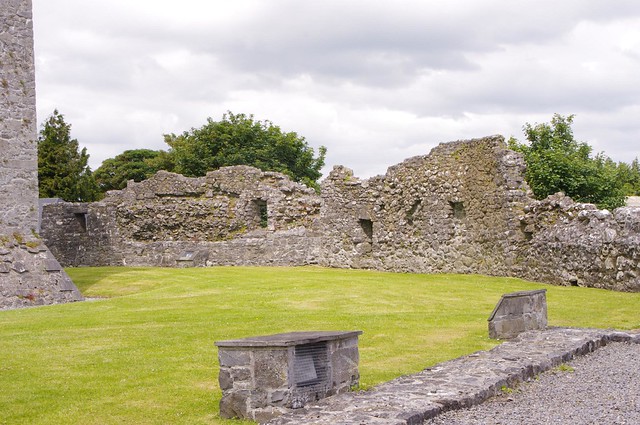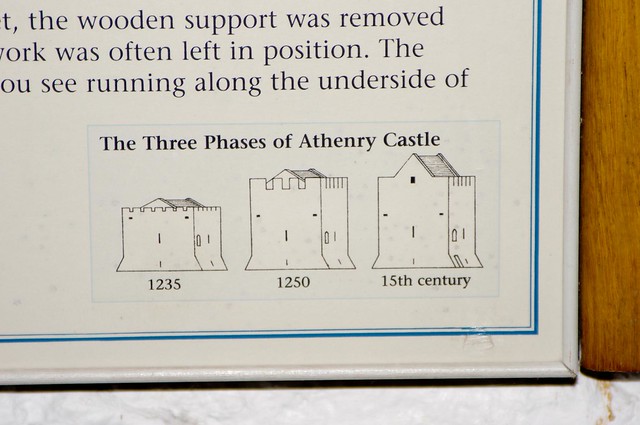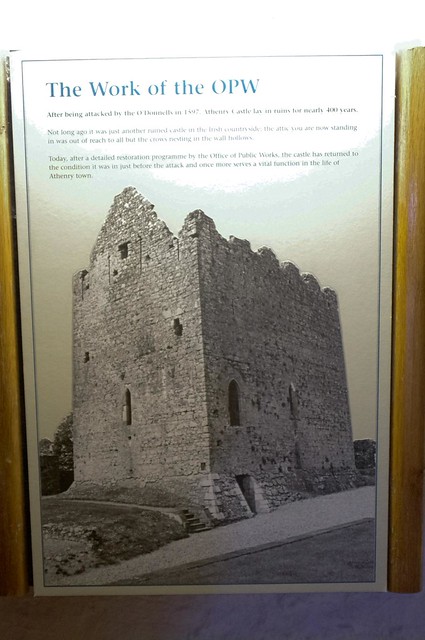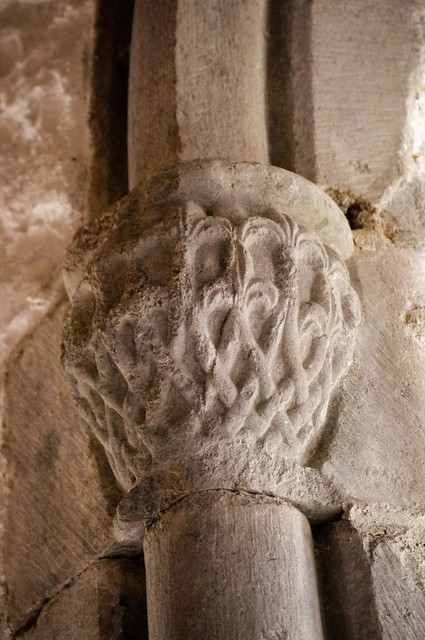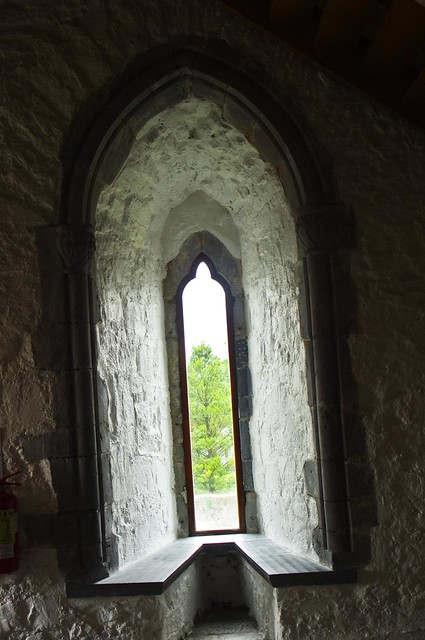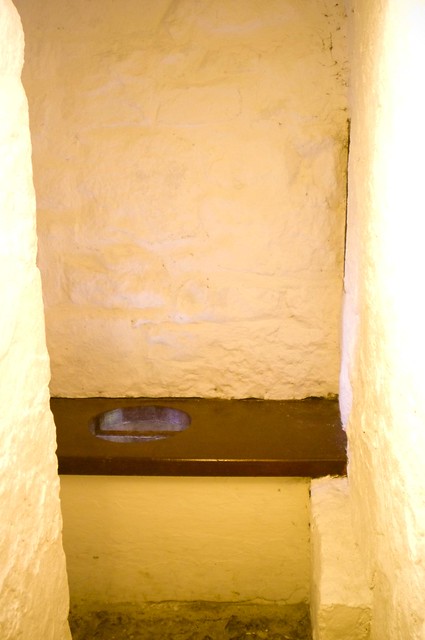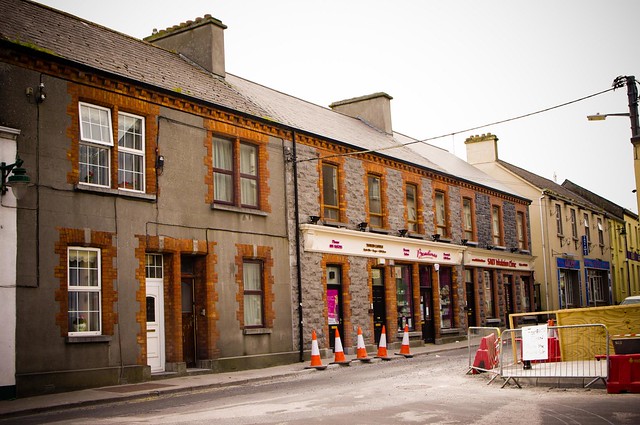Back in March, and again the beginning of June, I decided that I needed to get out of the city and go see a bit more of Ireland. I had heard many lovely things about a place called “Glenda-lock”, which is situated in the Wicklow mountains. I have to say that after taking a friend there in March, I had to return in June (when the weather was better) and take my mom and a bunch of photographs.

(Sunset at the Upper Lake at Glendalough)
Glendalough (Irish: Gleann Dá Loch, meaning “Glen of Two Lakes”) is one of the most visited places in Ireland. It’s located in the Wicklow Mountains National Park and has lots of walks and trails. The Glendalough Valley was carved out by glaciers during the Ice Age and the two lakes, from which Glendalough gets its name, were formed when the ice eventually thawed.
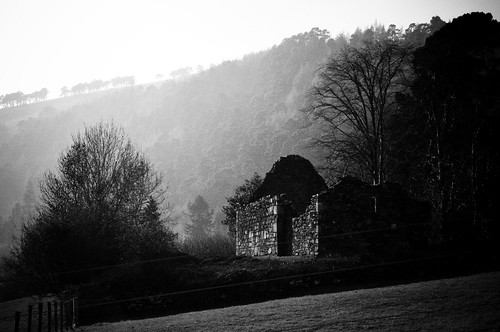
(House ruins with foggy mountain in the background)
It is also renowned for its Early Medieval monastic settlement founded in the 6th century by St Kevin, a hermit priest (now in ruins). Kevin was born to one of the ruling families of Leinster, and studed under several early Christian leaders. During this time, he went to Glendalough and was enchanted by its beauty.
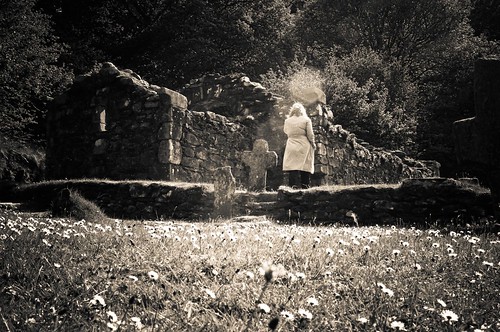
(St. Kevin’s Cell)
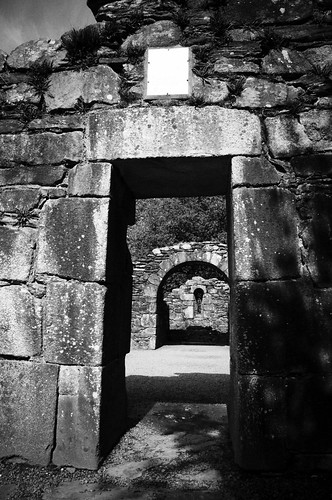
(Looking through the interior of St. Kevin’s Cell)
Shortly later, St. Kevin returned with several monks to found a monestary. As his fame spread, the settlement grew. Kevin died in 618, but the settlement continued for nearly 600 years – surviving through Viking Raids and deaths of many Abbots. In 1398, English troops finally invaded and destroyed the peaceful monestary for good.
 >
>
(Cemetery with 30 meter high Round tower to watch for raiders – Lower lake of Glendalough)
Since then, the place has remained one of pilgrimage, and I can see why as it’s one of the most beautiful places I’ve ever seen. It’s mentioned in many manuscripts and there are remnants of cemeteries, workshops, guest houses, infirmaries, farm buildings and dwellings all over the upper and lower lakes. Most of the buildings that exist today are from the 10th and 12th centuries.
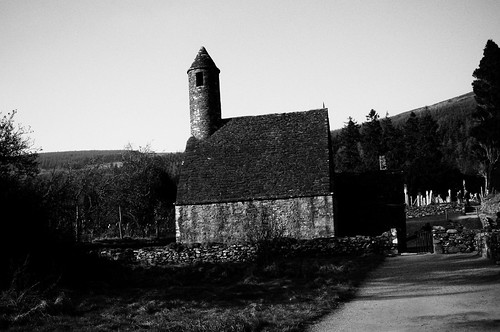
(St. Kevin’s church)
For More information, please see http://www.glendalough.ie/heritage_of_glendalough.php
For more pictures of my trips there, please see my flickr set.
